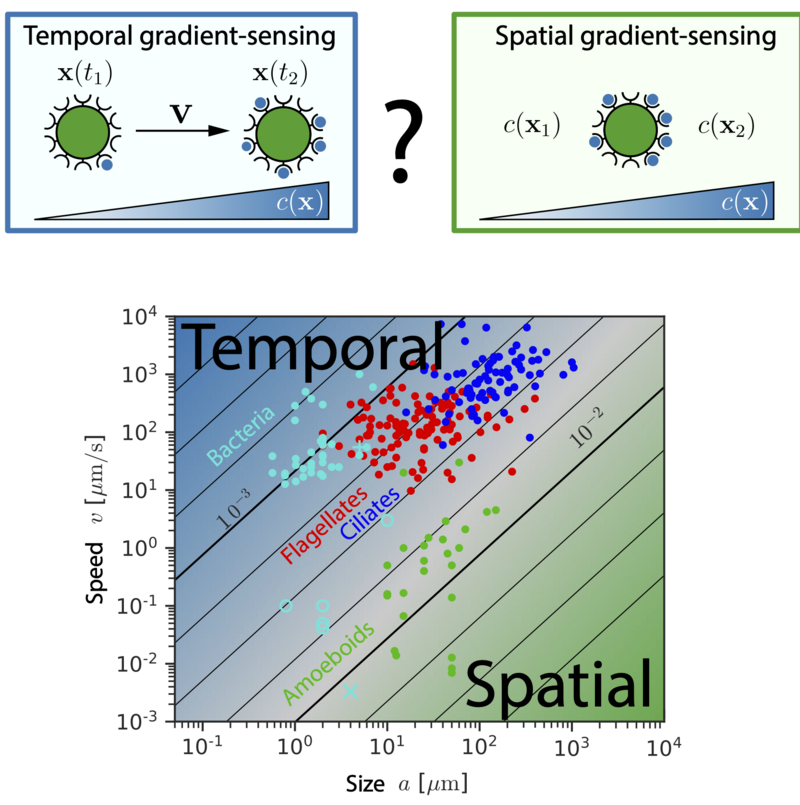Biological cells can actively move up a chemical gradient in a process termed chemotaxis. This enables immune cells to find inflammation sites, sperm cells to find the egg, and bacteria and social amoeba to build communities. Intriguingly, cells of different size use different chemotaxis strategies, comparing concentrations in either space or time. Large and slow cells usually measure concentration gradients by comparing concentrations across their diameter (spatial comparison), while small and swift bacteria detect concentration changes while moving (temporal comparison). But why do some cells use one strategy or the other?
A recent study published in PRX Life by researchers from the Friedrich group at the Cluster of Excellence, Physics of Life (PoL) addressed this long-standing question.The authors hypothesized that noise could be a reason. There is noise in sensing a concentration (as cells essentially have to count molecules that arrive stochastically), but also noise in moving straight, which is nontrivial for a small cell. To test this idea, they simulated a perfect cell that combines both gradient-sensing strategies and weights the information from both in an optimal manner. This provides a “law” under which conditions which of the two strategies provides more information. This law successfully predicts the gradient-sensing strategy chosen by 250 cells, ranging from bacteria to slime molds. And this agrees with a robot that uses the strategy of the perfect cell to find a source of light.
This study connects extensive previous work that had focused on gradient-sensing in either space or time. The present work makes a suggestion how coping with noise-corrupted information could have shaped the evolutionary choice of different gradient-sensing strategies in different cells. In addition, the findings may be useful for the design of bio-inspired search robots.
